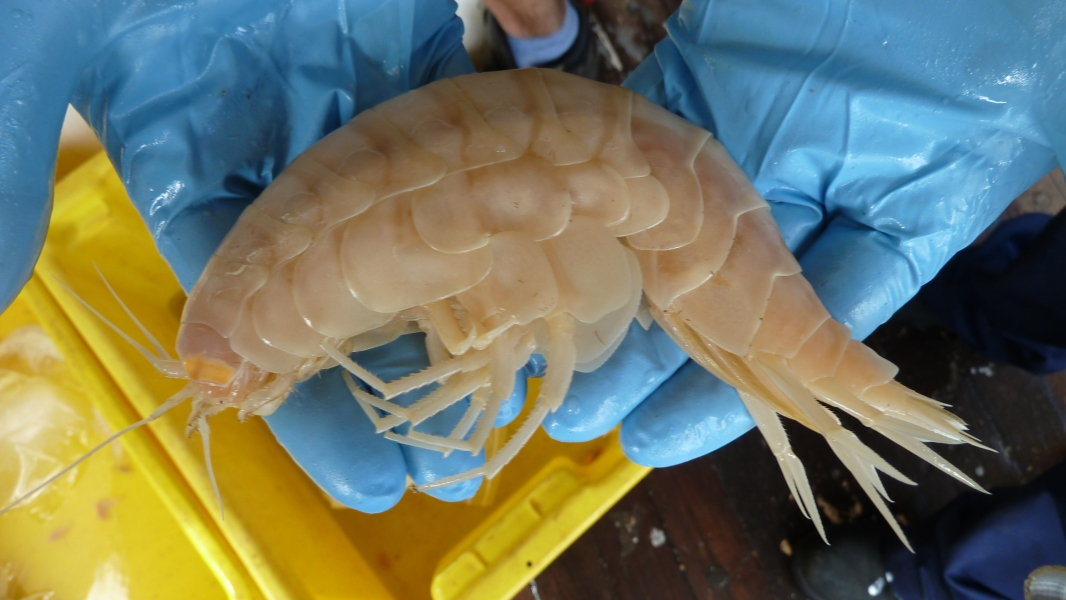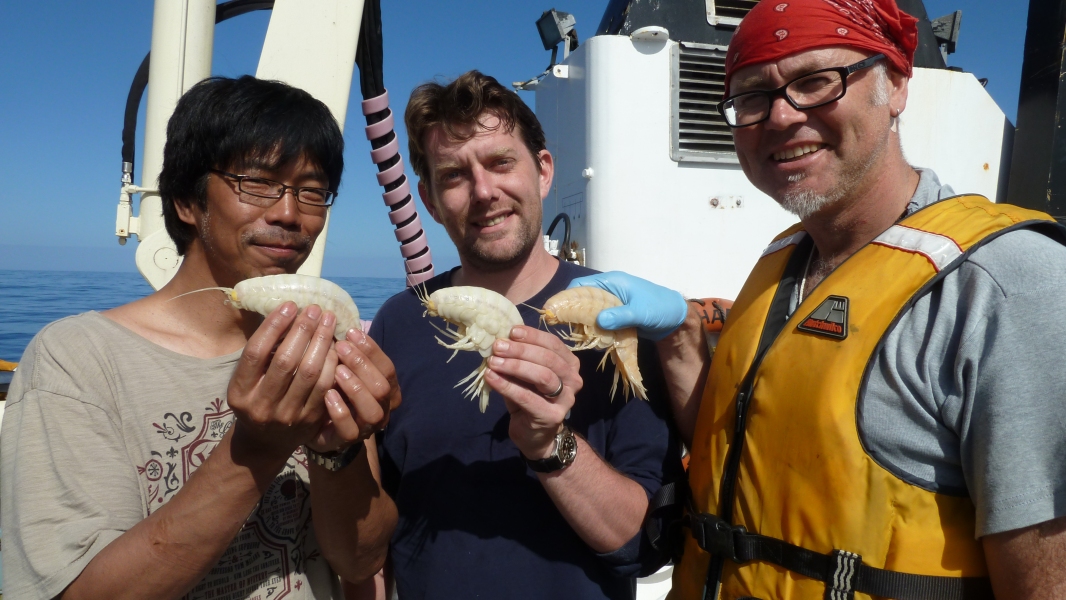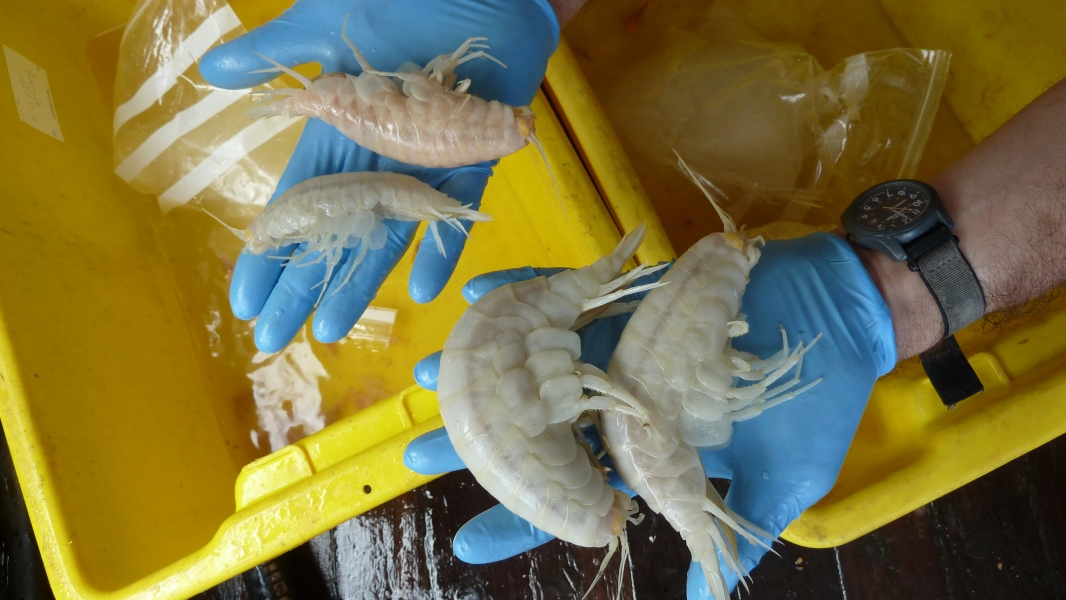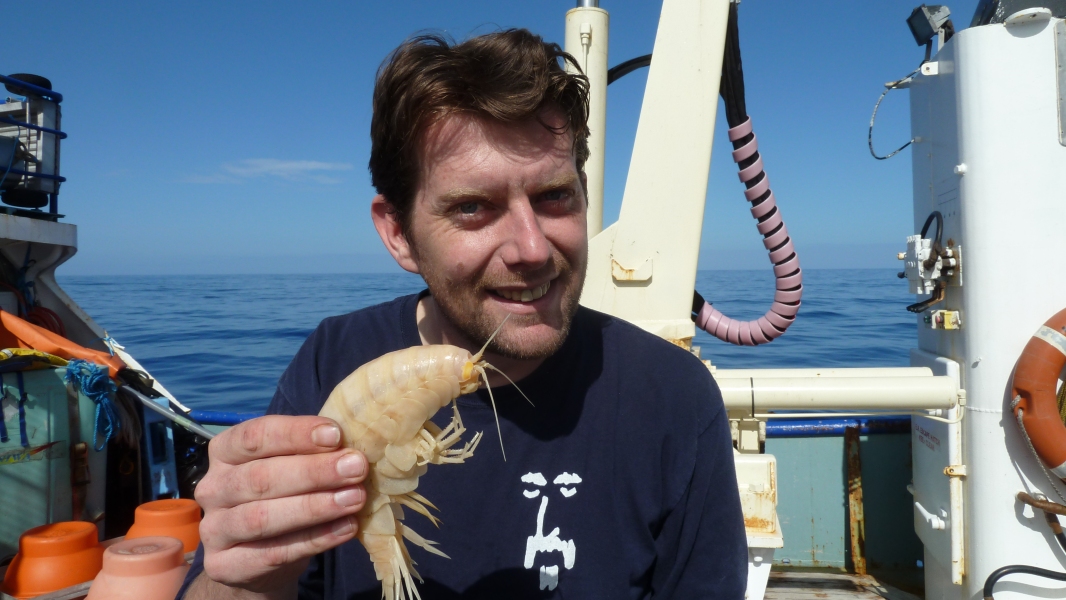A recent expedition to one of the deepest places on Earth has discovered one of the most enigmatic creatures in the deep sea: the 'supergiant' amphipod.
Amphipods are a type of crustacean which are particularly common in the deep sea, and are found in greater numbers the deeper you look. Typically deep sea amphipods are 2 to 3 centimetres long with the exception of the slightly larger 'giant' amphipod found in Antarctica. The supergiants dwarf the Antarctic giant.
They were discovered in the Kermadec Trench, north of New Zealand by scientists from the University of Aberdeen and the National Institute of Water & Atmospheric Research (NIWA), who led a joint UK/New Zealand expedition to the area. Also aboard NIWA's research vessel, the RV Kaharoa, were scientists from the Museum of New Zealand/Te Papa Tongarewa and Whitman College, USA.
Using specially designed ultra-deep submergence technology, the team deployed a camera system and a large trap to depths ranging from 6900 to 9900 metres. The team was aiming to recover specimens of the deep sea snailfish, which had not been captured since the early 1950s but had been photographed previously by the team at approximately 7000 metres depth.
Mr Andrew Stewart of Te Papa was particularly pleased that the trap managed to capture seven specimens of the snailfish, noting that "these are the first samples for 59 years, and it is incredibly exciting to have the opportunity to learn more about this type of fish". However the team's delight momentarily shifted when peering into the trap where amongst hundreds of 'normal' amphipods lay several individuals 10 to 14 times larger than any of the others.
The Voyage leader, Dr Alan Jamieson from the University of Aberdeen's Oceanlab, recalled "At the moment the traps came on deck we were elated at the sight of the snailfish as we have been after these fish for years. However, seconds later I stopped and thought 'what on earth is that?' whilst catching a glimpse of an amphipod far bigger than I ever thought possible".
These new sightings and specimens of the supergiant represent both the biggest specimen ever caught (28 centimetres long) and the deepest they have ever been found (7000 metres deep).
Dr. Ashley Rowden from NIWA in Wellington said "It just goes to show that the more you look, the more you find. For such a large and conspicuous animal to go unnoticed for so long is just testament to how little we know about life in New Zealand's most deep and unique habitat."
Dr. Jamieson later added "The surprising thing here is that we have already been to this deep trench twice and never come across these animals before. In fact a few days after the discovery we deployed all the equipment again on the same site and we failed to photograph or capture a single supergiant; they were there for a day and gone the next".
The challenge for the team now is to determine whether these new samples are the same species as those from Hawai'i and to try and establish why, out of the hundreds of species of deep-sea amphipods, these ones have evolved to be so large.
The supergiant and the fish specimens are currently residing in Wellington, New Zealand until after the team's next expedition in February.
The expedition was predominantly funded by the Foundation Total in France, with additional funding from NIWA.




